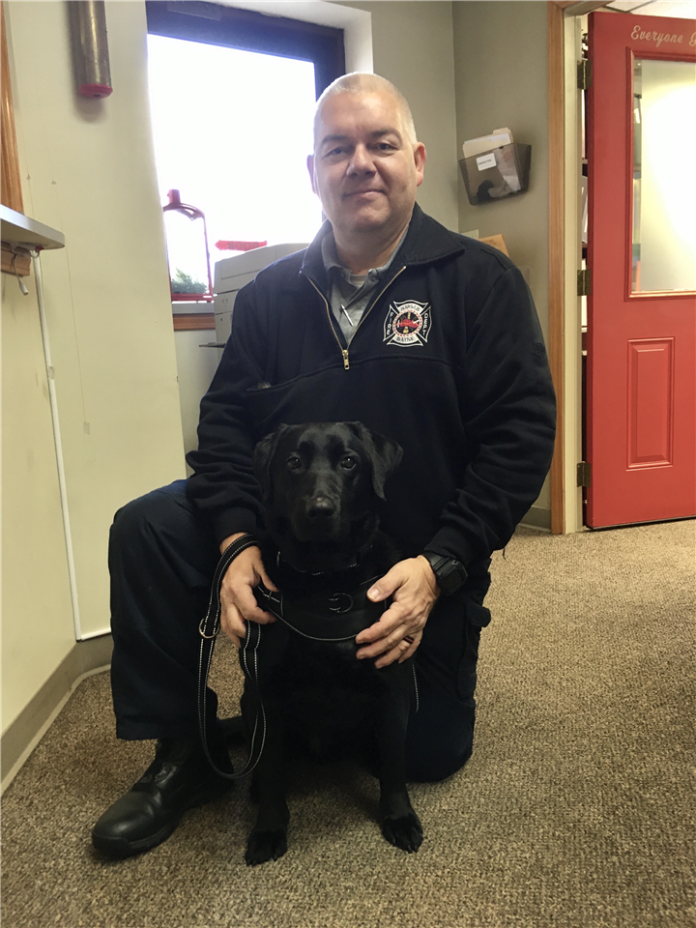
The latest member of the Warsaw-Wayne Fire Territory is fire accelerant detector service dog Raven.
“You can pet him,” said Joe Fretz, the dog’s handler. Fretz is a 26-year veteran who started as a Warsaw Fire Department volunteer, was hired on full-time and rose through the ranks from firefighter to captain. He’s now the territory’s fire marshal.
Raven can sniff out 12 distinct fire-starting chemicals. The 4-year-old animal is, indeed, as black as a raven’s wing and a friendly sort, happy to meet and greet new people.
Warsaw City Council members approved the acquisition of Raven in early March when they learned Johnson Detection K9 would donate the dog to the WWTF and funds were available for his care.
The coronavirus pandemic followed by the governor’s executive orders limiting non essential travel have delayed Fretz’ classes to earn a Canine Accelerant Detection Association certification. His certification course will be rescheduled when daily life returns to the new normal.
“Raven is already trained,” Fretz said. “He knows what to do. I have to learn what he does so I understand him better.”
CADA certification means the fire marshal – K9 team will search the site of a suspicious fire and their findings can be entered as evidence in a lawsuit.
“The dog provides pinpoint accuracy and determines where an accelerant was poured or placed. His nose is better than an electronic device. Samples would be taken of the area he indicates and analysis will determine exactly what the accelerant was. We produce the evidence and any charges would be filed through the prosecutor’s office.”
Fretz and Raven are inseparable, together 24 hours a day, seven days a week.
“I’ve never had a service dog, but I’ve been around them, especially when Wilson had Bailey,” he said.
Wilson is Mike Wilson, the WWTF’s current fire chief whose service dog, the late Bailey was trained as an ATF dog. The two of them traveled to sites throughout the region. Bailey could detect firearms and explosives as well as fire accelerants. Bailey was retired in 2012 and died New Year’s Eve 2016.
Fretz marvels at the bond he’s made with his dog.
“It’s super-exciting,” he said. “He doesn’t like me out of sight and gets a little anxious or worried when I am. He’s like my best friend and it’s pretty awesome.”
Raven goes home with Fretz, of course, where Fretz and his wife also have a little poodle,?Bella, who,?Fretz said, enjoys the companionship of Raven.
A good accelerant detection dog is food-driven, meaning they’ll work for food. And Raven earns three cups of food a day out of Fretz’ hand, portioned out in training sessions.
The pair attend non-suspicious fire scenes now so the dog gets used to generator and truck engines sounds, hearing men talking and seeing equipment moved around and to take in the various and plentiful odors of burned materials. When the scene is quiet, Fretz and Raven move in, working alone when there are less distractions.
“We do a walk through so he gets used to all the excitement, but he’s not actually there to sniff out an accelerant at this point in time.”
Fretz and Raven’s territory is in the city and county.




